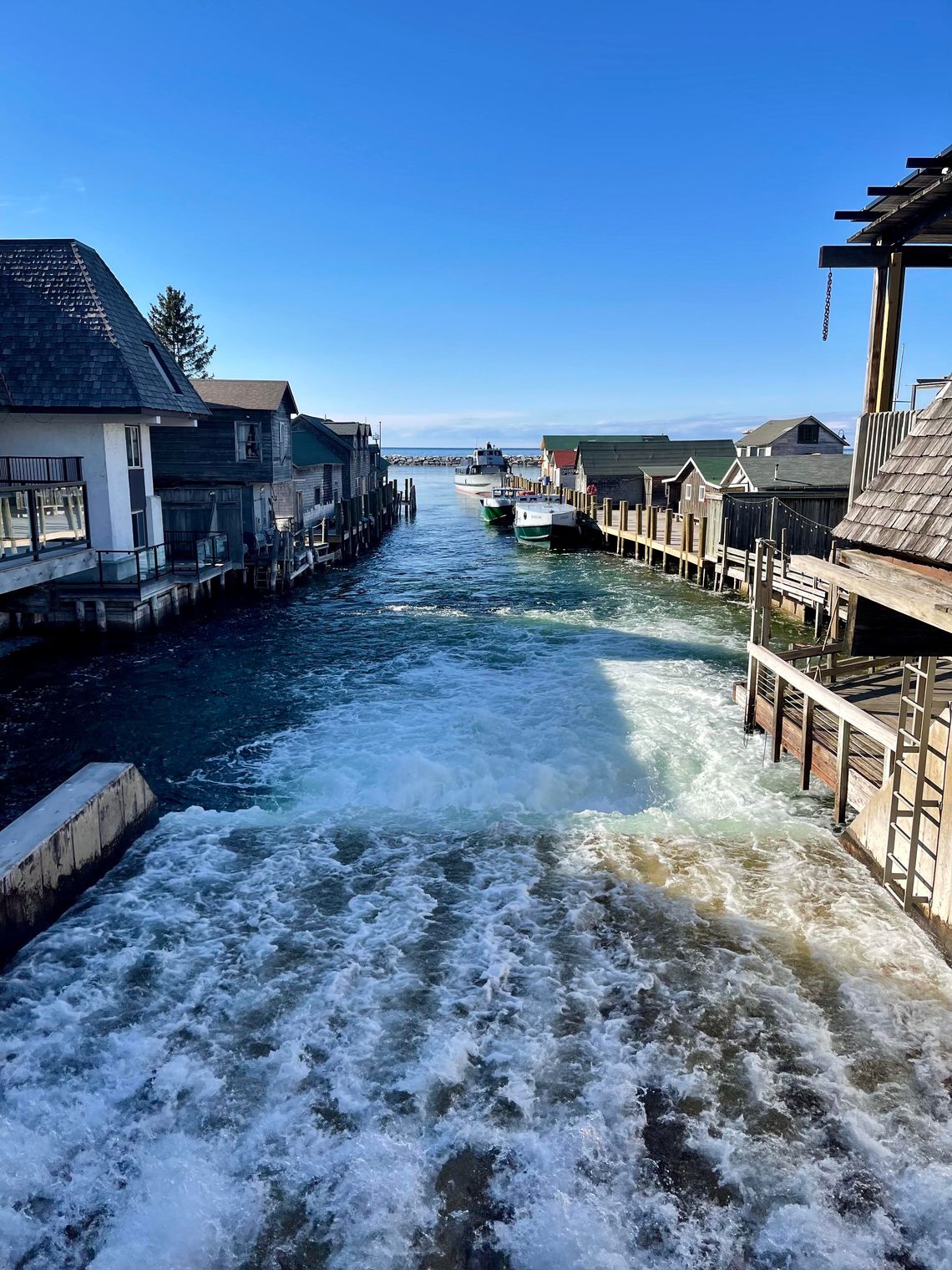The Leland Dam Authority approved setting the summer lake level for Lake Leelanau at 589.21 feet last Wednesday.
This level was mandated by the circuit court of Leelanau County in 1976, but the order allows this level to fluctuate a maximum of 2 inches below this level. With this in mind – and in hopes of accurately reflecting the desires of lake users – the board directed the dam operator to aim for the lower end of the limit.
As of the time of writing, Lake Leelanau is still about 1.25 inches short of the court-ordered levels at the Leland Dam, which is where the Circuit Court says the water levels should be measured.
The water levels are expected to be higher this time of year due to rains, but as dam authority member Richard Thompson noted, it’s been a dry spring so far. Since the Leland Dam can only really lower the water level and not raise it, Thompson said they will have to stay at this level for now until rains bring it higher.
Thompson noted that the water level at Lake Leelanau has been a source of controversy throughout the county’s history. Now some county residents are finding that the water levels are too low in some areas, like the Carp River, while others are reporting higher levels than ever elsewhere, like in the southern part of Lake Leelanau.
According to Steve Hamilton, a retired Michigan State University professor of ecosystem ecology living in Centerville Township, the higher water levels in the southern parts of the lake are a result of changes in the intensity of rainfall in recent years.
On Sept. 6 last year, the county received over 7.5 inches of rainfall in some areas over just 24 hours. The National Weather Service described this as a “200year rain event” at the time, but Hamilton said that bigger downpours like this have been occurring over shorter time periods in recent years, and that “injecting all the water into the system at once is going to have a lasting effect” on the watershed.
In Hamilton’s assessment, this trend could explain why homeowners who built lakeside homes in south Lake Leelanau years ago are seeing water levels encroaching further onto their property in recent years.
However, Hamilton said that this does not account for lower water levels being observed on the Carp River. He said that if these reports are accurate, “there are two different things going on here.” He said this could be the result of sand accumulation in the Carp River channel altering the hydrology of the lake, but this is just a hypothesis.
Also at their April 17 regular session, members of the dam authority expressed a desire to share more information about the water levels through a Lake Leelanau Association newsletter in May, and to update their procedures and manuals to state more clearly when dam operators should dump water into Lake Michigan.








